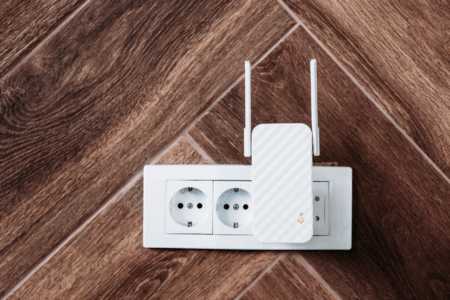An outdoor Wi-Fi extender, sometimes called a wireless access point or wireless repeater, is perhaps the most straightforward option, since it’s the only solution that involves installing hardware outside. Many of these devices are enterprise-grade, but some manufacturers have recently come out with consumer-grade outdoor extenders. These devices are made to be exposed to the elements year round and have hardware capable of communicating with your router wirelessly in order to give you great Wi-Fi coverage outside your home.
The first step is to find an extender that’s compatible with your current router or purchase a new router and extender to upgrade your entire network.
Next, check the ingress protection (IP) rating on the packaging and the temperature range the device can withstand. The IP rating defines how weather resistant the device is, mainly against dust and water. The highest rating is IP68, which means it’s totally protected against dust and can withstand long periods of immersion underwater.
An option that is a little more of a complicated outdoor access point, that allows you set separate modes for the 2.4GHz and 5GHz networks. The setup is a little more advanced, but you don’t have to drill holes or run new cables.
Basically, you set your 5GHz band to wireless bridge mode and the 2.4GHz band to access point mode. This makes your 5GHz band a dedicated backhaul link to the router and allows your outdoor devices to connect via 2.4GHz. This setup limits your speed a little but you should still be able to take full advantage of your 2.4GHz bandwidth




